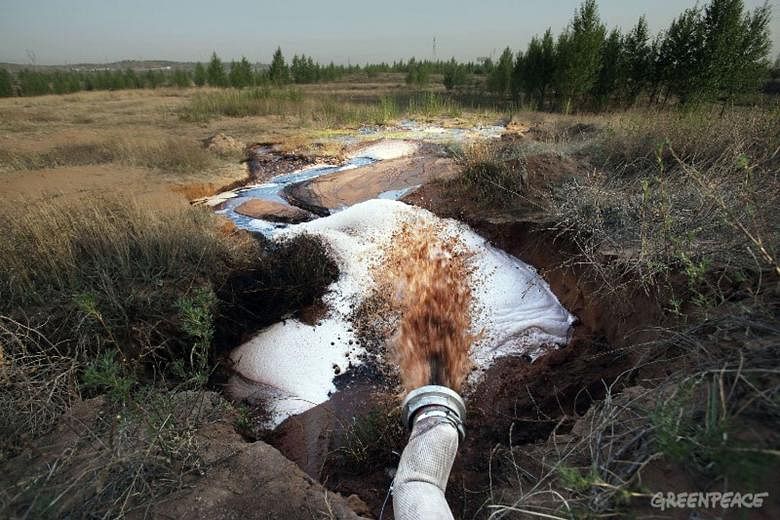BEIJING • More than 80 per cent of the water from underground wells used by farms, factories and households across the heavily populated plains of China is unfit for drinking or bathing because of contamination from industry and farming, according to new statistics reported by Chinese media on Monday, sparking new alarm about pollution in the world's most populous country.
After years of focus on China's hazy skies as a measure of environmental blight, the new data from 2,103 underground wells struck a nerve among Chinese citizens, who have become increasingly sensitive to health threats from pollution.
Most Chinese cities draw on deep reservoirs that were not part of this study, but many villages and small towns in the countryside depend on the shallower wells of the kind that were tested for the report.
"From my point of view, this shows how water is the biggest environmental issue in China," said Professor Dabo Guan, of the University of East Anglia in Britain, who has been studying water pollution and scarcity in China.
Mr Ma Jun, director of the Institute of Public and Environmental Affairs in Beijing, noted that the survey measured water sources relatively close to the surface and that many cities get their water from reservoirs that are hundreds of metres deeper.
"Fewer and fewer cities are using the heavily polluted shallow-depth underground water," said Mr Ma. "Most are digging deep wells for drinking. This is a very important distinction that must be made."
For years, the Chinese government has acknowledged that wells and underground water reserves were endangered by overuse and widespread contamination from industry and farming. In 2011, the Ministry of Environmental Protection issued a plan to cut the pollution of underground water resources by the end of this decade.
That plan said that China's use of underground water grew from 57 billion cu m a year in the 1970s to 110 billion cu m in 2009, providing nearly a fifth of the country's total supplies. In the arid north, underground supplies provided about two-thirds of water for domestic needs, it said.
But estimates of pollution of underground sources have varied depending on the depth and location of wells tested. An annual report from the Ministry of Water Resources said that in 2014 nearly half of 2,071 monitored wells had "quite poor" water quality and an additional 36 per cent had "extremely poor" quality.
The latest study found that 32.9 per cent of wells tested across areas mostly in northern and central China had Grade 4 quality water, meaning that it was fit only for industrial uses, the National Business Daily said. Another 47.3 per cent of wells were even worse, at Grade 5. The contaminants included manganese, fluoride and triazoles, a set of compounds used in fungicides. In some areas, there was pollution from heavy metals.
The heavy contamination of supplies near the surface was forcing more cities to dig much deeper underground for clean water, which was taxing the capacity of those deep aquifers, Mr Guan said.
"These latest statistics are an indicator of how bad the underground water quality is," he said.
NEW YORK TIMES

